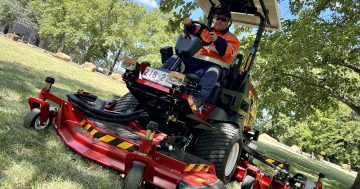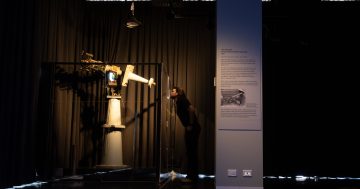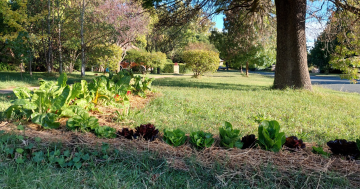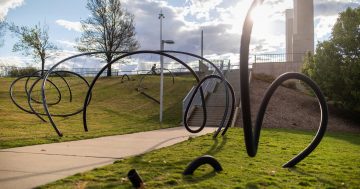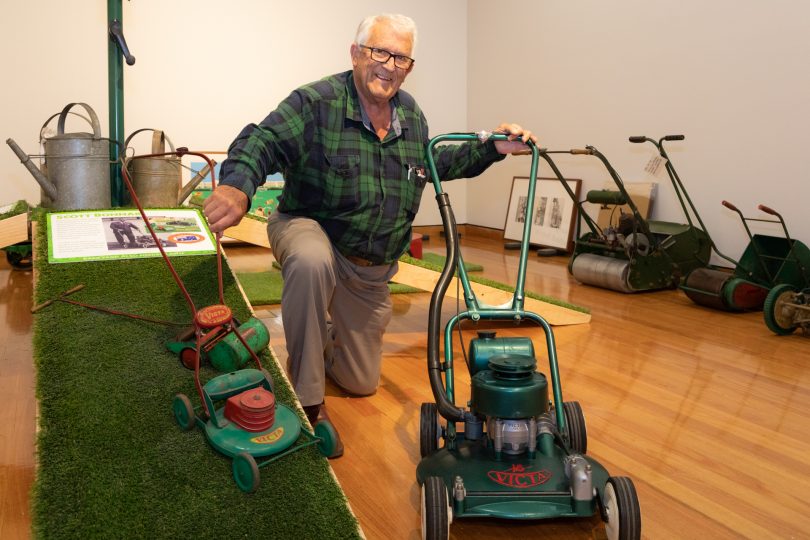
Antiquarian Richard Bird with antique and toy mowers and a Brenda Croft installation at CMAG. Photo: Michelle Kroll.
Drought notwithstanding, Canberra has always been a city of lawns. The sweeping lawns of Old and New Parliament House, the wide grassy expanses of our parks and gardens are an integral part of our garden city heritage.
Lawns have also played a vital social role here: they’re where the protests take place, the lovers loll and the public servants picnic.
Canberra Museum and Gallery has opened The Blade: Australia’s Love Affair with Lawn, a travelling exhibition curated by Richard Heathcote in conjunction with the Australian Garden History Society. It explores the history of lawn, from Indigenous land management practices through to modern gardening and lawn innovations and our complicated relationship with the “the green”.
And CMAG’s Social History Curator Tiaan Zampaglione says the ACT’s long and sometimes complicated relationship with lawns is woven through the show (there’s even a specific Canberra grass mix off tall fine fescue and Kentucky Bluegrass).
There are Canberra artworks from Dean Cross and Brenda Croft, a historic Canberra model lawn sprinkler and an impeccably restored Victa mower lent by Member for Brindabella Mick Gentleman. And who among us hasn’t smiled at the Canturf signs? Surely the best marketing job in the region belongs to whoever thinks up slogans like “Lawngerie modelled here”?
But recent decades of drought have challenged our vision of lush green lawns as we question how sustainable they are for a climate-challenged future.
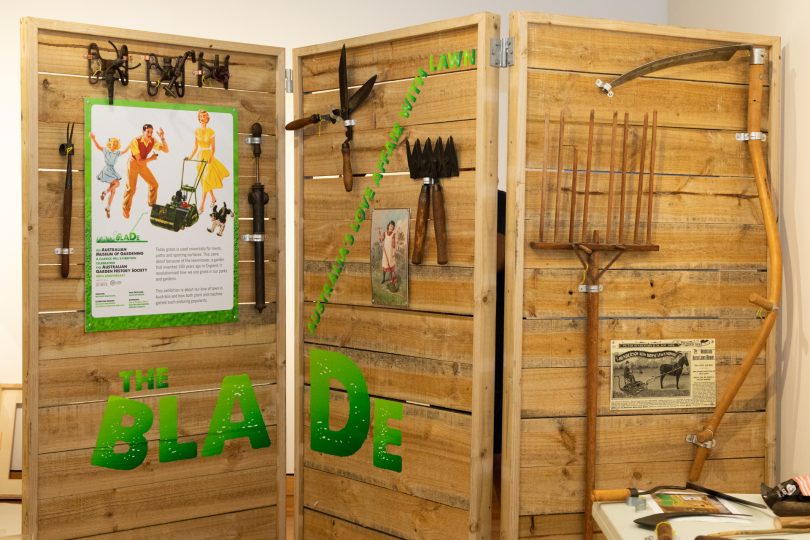
Antique garden tools yell the story of our love affair with the lawn. Photo: Michelle Kroll.
Garden tools antiquarian, expert and collector Richard Bird, who has contributed a substantial chunk of his collection to the exhibition, says that the concept of lawns began with English landscaper ‘Capability’ Brown who cut huge vistas in front of the great country houses of his time.
That required cut grass, originally scythed by agricultural workers in the dewy mornings and collected by women and children. Scythes are still manufactured today and the exhibition has examples of the differing British and European designs.
The cylinder mower was the first step in an automated revolution that began with horse-drawn mowers and included steam engines at one point (requiring the full-time attention of at least two people, since once started, they were difficult to stop).
Electric motors were added to mowers towards the end of the 19th century although the bladed rotary mower had been first invented in the late 1750s.
Richard says that agricultural and horticultural equipment have a long shared history, but that began to change when lawns became an upwardly mobile symbol of success for the growing middle classes.
“Bowls, quoits and tennis courts require excellent mowing and lawns then become suburban,” he explains. The work that used to be performed by rural workers was transferred to gardeners, who operated in a strict hierarchy.
Edging mowers and a plethora of other equipment for the impeccably maintained lawn developed, including small but fully functional mowers that allowed small children to join the lawn labour.
Advertisements stretching well into the 1970s featured attractive women and emphasised the desirability of well-trimmed grass. And who remembers the toy Victa mower, complete with realistically clicking sounds?
“I think the thing about lawns is that just about everyone can relate to them,” Mr Bird says.
Associated programs include a floor talk, Lawn with Paul Janssens from the Parliament House on Wednesday, 9 December, and an excursion to the Canberra Croquet Club Saturday, 23 January 2021.
The exhibition is on display at Canberra Museum and Gallery until 20 February 2021.












